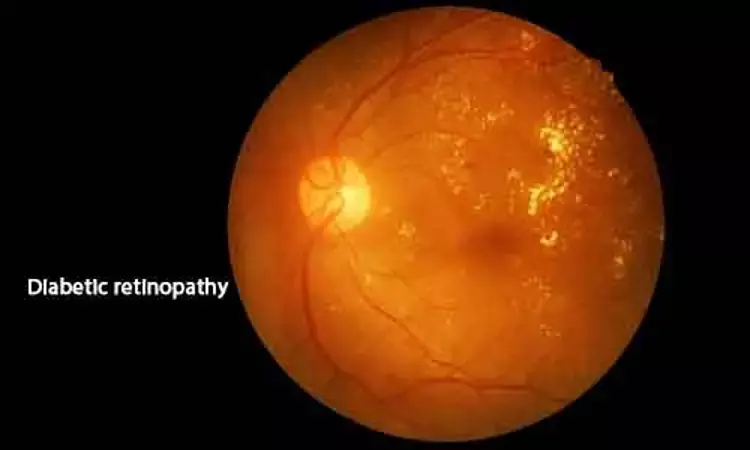- Home
- Medical news & Guidelines
- Anesthesiology
- Cardiology and CTVS
- Critical Care
- Dentistry
- Dermatology
- Diabetes and Endocrinology
- ENT
- Gastroenterology
- Medicine
- Nephrology
- Neurology
- Obstretics-Gynaecology
- Oncology
- Ophthalmology
- Orthopaedics
- Pediatrics-Neonatology
- Psychiatry
- Pulmonology
- Radiology
- Surgery
- Urology
- Laboratory Medicine
- Diet
- Nursing
- Paramedical
- Physiotherapy
- Health news
- Fact Check
- Bone Health Fact Check
- Brain Health Fact Check
- Cancer Related Fact Check
- Child Care Fact Check
- Dental and oral health fact check
- Diabetes and metabolic health fact check
- Diet and Nutrition Fact Check
- Eye and ENT Care Fact Check
- Fitness fact check
- Gut health fact check
- Heart health fact check
- Kidney health fact check
- Medical education fact check
- Men's health fact check
- Respiratory fact check
- Skin and hair care fact check
- Vaccine and Immunization fact check
- Women's health fact check
- AYUSH
- State News
- Andaman and Nicobar Islands
- Andhra Pradesh
- Arunachal Pradesh
- Assam
- Bihar
- Chandigarh
- Chattisgarh
- Dadra and Nagar Haveli
- Daman and Diu
- Delhi
- Goa
- Gujarat
- Haryana
- Himachal Pradesh
- Jammu & Kashmir
- Jharkhand
- Karnataka
- Kerala
- Ladakh
- Lakshadweep
- Madhya Pradesh
- Maharashtra
- Manipur
- Meghalaya
- Mizoram
- Nagaland
- Odisha
- Puducherry
- Punjab
- Rajasthan
- Sikkim
- Tamil Nadu
- Telangana
- Tripura
- Uttar Pradesh
- Uttrakhand
- West Bengal
- Medical Education
- Industry
Ultra-widefield imaging accurately predicts diabetic retinopathy worsening over time: JAMA

USA: Baseline retinal nonperfusion and the presence of peripheral findings on ultra-widefield fluorescein angiography (UWF-FA) were tied to a higher future risk of disease worsening in diabetic retinopathy, researchers state in a recent study published in JAMA Ophthalmology.
Ultra-widefield (UWF) imaging is known to improve the ability to identify peripheral diabetic retinopathy (DR) lesions versus standard imaging. However, it is not known if the detection of predominantly peripheral lesions (PPLs) is better for predicting the rates of disease worsening over time. To fill this knowledge gap, Dennis M. Marcus, Southeast Retina Center, Augusta, Georgia, and colleagues aimed to determine whether PPLs identified on UWF imaging are associated with increased disease worsening beyond the risk associated with baseline Early Treatment Diabetic Retinopathy Study (ETDRS) Diabetic Retinopathy Severity Scale (DRSS) score in a cohort study.
The prospective, multicenter, longitudinal observational study was conducted at 37 US and Canadian sites. The enrollment of 388 participants was done between February and December 2015. 200° UWF-color images were obtained and graded for DRSS at a reading center at baseline and annually through 4 years. Evaluation of baseline UWF-color and UWF-fluorescein angiography (FA) image was done for PPL presence. Data analysis was done from May 2020 to June 2022.
Predominantly peripheral lesions were defined as DR lesions with a greater extent outside vs inside the 7 standard ETDRS fields. Disease worsening defined as worsening 2 steps or more on the DRSS or receipt of DR treatment was the primary outcome. Analyses were adjusted for baseline DRSS score and correlation between 2 study eyes of the same patient.
The findings of the study were as follows:
- Data for 544 study eyes with nonproliferative DR (NPDR) were analyzed (50% were female participants; median age, 62 years; 68% White).
- The 4-year disease worsening rates were 45% for eyes with baseline mild NPDR, 40% for moderate NPDR, 26% for moderately severe NPDR, and 43% for severe NPDR.
- Disease worsening was not associated with color PPL at baseline (present vs absent: 38% vs 43%; HR, 0.78) but was associated with FA PPL at baseline (present vs absent: 50% vs 31%; HR, 1.72).
The researchers identified no association with color PPL, however, the presence of FA PPL was tied to a greater risk of disease worsening over 4 years, irrespective of baseline DRSS score.
"These findings indicate that the use of UWF-FA to evaluate retinas peripheral to standard ETDRS fields may improve the ability to predict disease worsening in NPDR eyes," the researchers wrote. "These findings support UWF-FA use for future DR staging systems and clinical care for accurate determination of prognosis in NPDR eyes."
Reference:
Marcus DM, Silva PS, Liu D, et al. Association of Predominantly Peripheral Lesions on Ultra-Widefield Imaging and the Risk of Diabetic Retinopathy Worsening Over Time. JAMA Ophthalmol. Published online August 18, 2022. doi:10.1001/jamaophthalmol.2022.3131
Dr Kamal Kant Kohli-MBBS, DTCD- a chest specialist with more than 30 years of practice and a flair for writing clinical articles, Dr Kamal Kant Kohli joined Medical Dialogues as a Chief Editor of Medical News. Besides writing articles, as an editor, he proofreads and verifies all the medical content published on Medical Dialogues including those coming from journals, studies,medical conferences,guidelines etc. Email: drkohli@medicaldialogues.in. Contact no. 011-43720751


